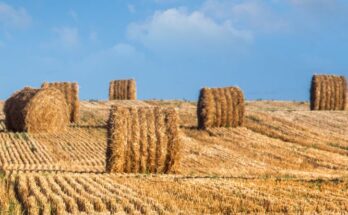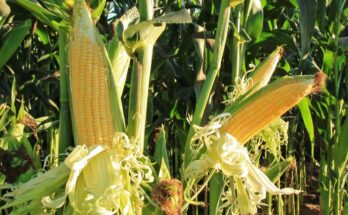Food, water and air are considered the fundamental needs to live a healthy life. It is important to ensure that people have access to food required and in keeping with their dietary practices – the United Nations’ Committee on World Food Security defines food security as a condition where all people, always, have physical, social, and economic access to sufficient, safe, and nutritious food that meets their food preferences and dietary needs for an active and healthy life. Food security is a key consideration in all major policy decisions as it is intrinsically related to the sustainable development goals (SDGs) 1, 2, and 3, i.e., ending poverty, achieving zero hunger by promoting sustainable agriculture, and ensure healthy lives and wellbeing for all at all ages, respectively.
With the pandemic continuing to affect the global economy, considerations around food security are more important than ever – in India alone, the number of persons facing moderate to severe food insecurity has increased by about 9.7 crore in 2018-20, a rise of about 6.8 percentage points, the latest edition of the State of Food Security and Nutrition in the World (SOFI) report, released jointly by five UN organisations, says. As rising unemployment levels continue to affect the purchasing power of Indians under the effects of pandemic, it becomes urgent to implement measures that will bring food security.
The National Commission on Population (NCP) under the Ministry of Health and Family Welfare (MoHFW) expects India’s population to grow by 25 per cent to 1.52 billion by 2036. The COVID-19 pandemic is an apt opportunity to prepare a roadmap as to how disruptions related to food supply can be avoided in event of future outbreaks. In order to ensure equitable distribution of food that is safe to consume, existing farming practices must be in line with the best practices of safe production of food items. In the prevailing conditions, food security assumes greater importance due to issues such as pest and disease infestations, hygiene, antimicrobial resistance and climate change. In absence of the right measures, food safety can become a constant concern for the policymakers and the people alike. Despite being a leader in agricultural produce, including animal husbandry and horticulture, India may face substantial challenges in ensuring the food security of its people.
Addressing challenges to food security
Some of the key moves for agriculture sector that may complement India’s food security measures should include the following:
Making agriculture climate-resilient: Estimates show that it takes roughly 1,827 litres of water to produce one kg of wheat and 28 per cent of global agriculture happens in water-stressed regions. Climate change is already affecting food security in many ways. Predictions of the International Panel on Climate Change (IPCC) say that increasing the amount of CO2 in the air is making crops nutritionally poor while heat stress is creating greater food waste. Right from choosing the right crop for the area to choosing the climate-resilient variety of seeds – especially in the coastal areas – moving towards a future will help people and nature to co-exist and thrive.
You may also like: Can satellite imagery strengthen food security?
Prevent environmental degradation: Environmental challenges to food security include rising temperature and soil erosion, among others. Soil erosion is one of the biggest threats but an invisible threat to food security goals in India and the world. It can reduce crop yields by half or grow malformed, smaller, and less nutritious food. Developed countries like the United States loses about US$ 44 billion a year due to soil erosion that causes lost productivity and water pollution. In Europe and South Asia, it reduces annual agricultural productivity by US$ 1.38 billion and US$ 10 billion, respectively. With 40 per cent of the world’s landmass already arid, and rising temperatures turning more of it into desert, chances are the amount of food grown will feed only half of the global population by 2050.
Behavioural change to tackle double burden of malnutrition: Malnutrition does not mean lack of adequate food to fulfil nutrition needs, but also includes a mismatch between the required and available nutrition, including excess of unrequired food. Such imbalance can lead to health issues such as diabetes, poor heart health and musculoskeletal disorders due to obesity or poor bone quality. Studies show prevalence of overweight and obesity in India is increasing faster than the world average. India is also home to second highest number of obese children – about 8 per cent of school children in India suffer from some form of obesity; in Delhi, every 1 in 2 children has an unhealthy body mass index (BMI). Inducing behavioural change that will reduce choosing processed food over freshly-cooked ones, meat and sugary drinks over legumes and food will be key to promote food security that provides balanced nutrition.
The UN’s food security report states that future generations will only thrive as productive actors and leading forces in food systems if decisive action is taken to ensure that children are no longer deprived of their right to nutrition. It is time to take a decisive step.
(Views expressed in the article are author’s own.)





